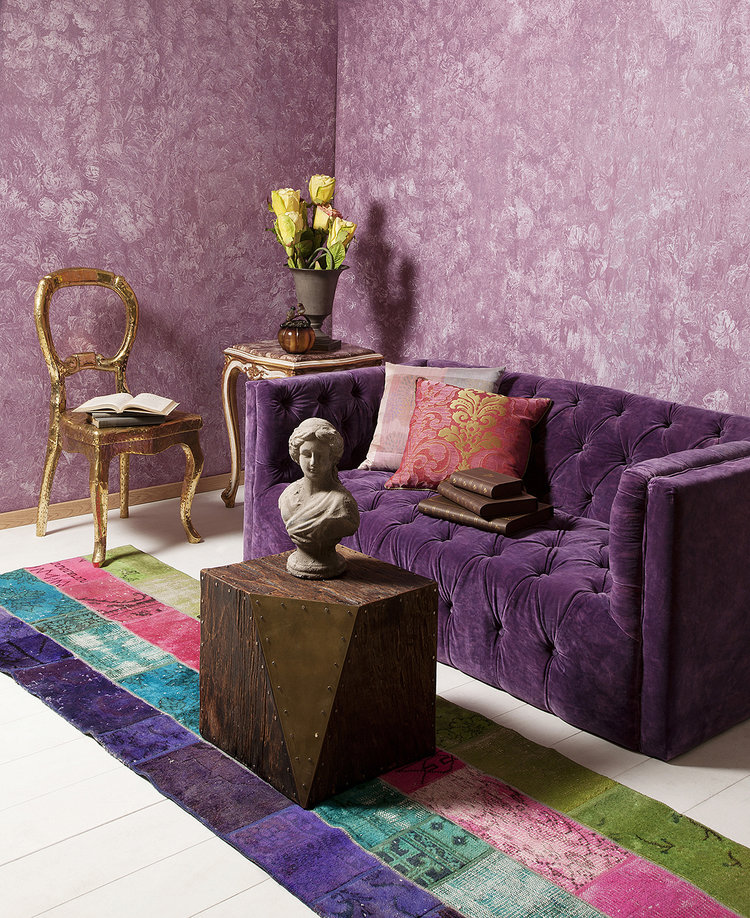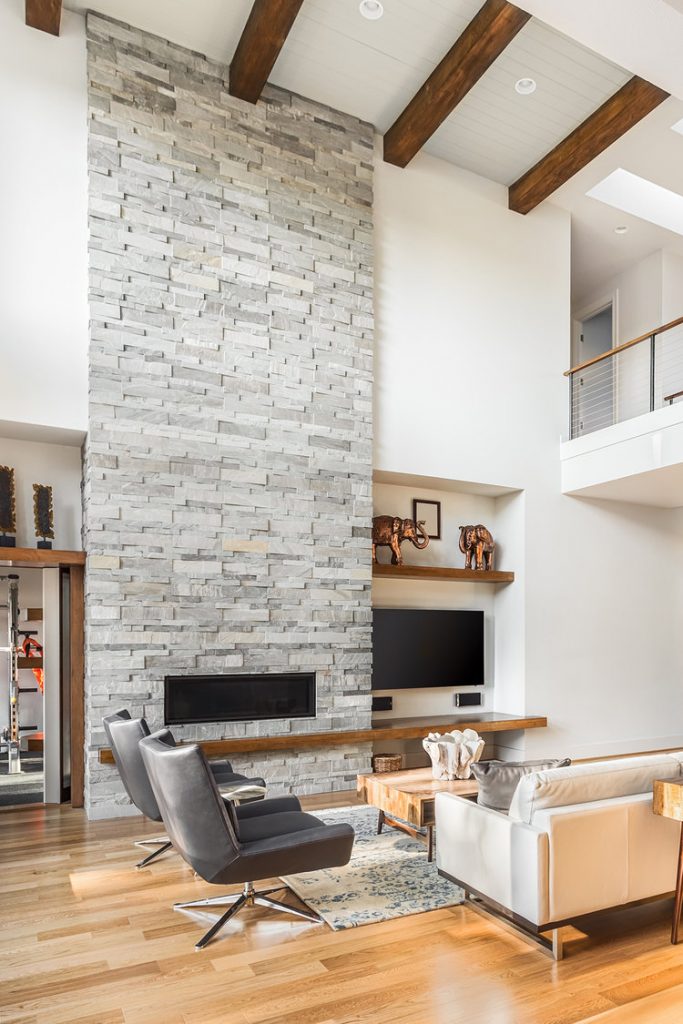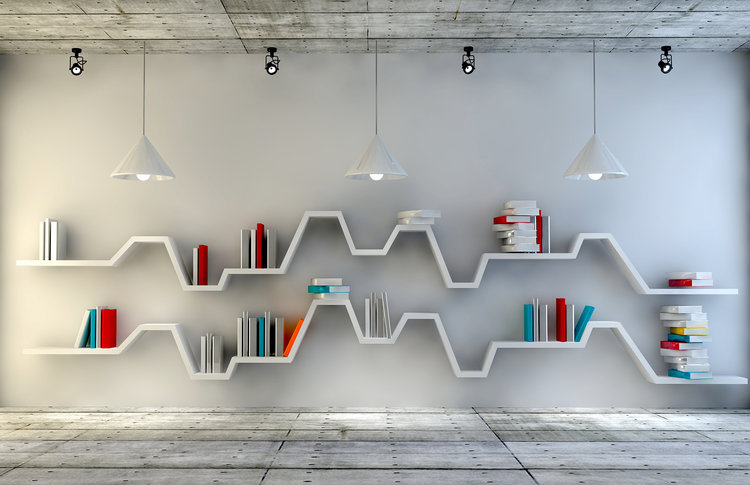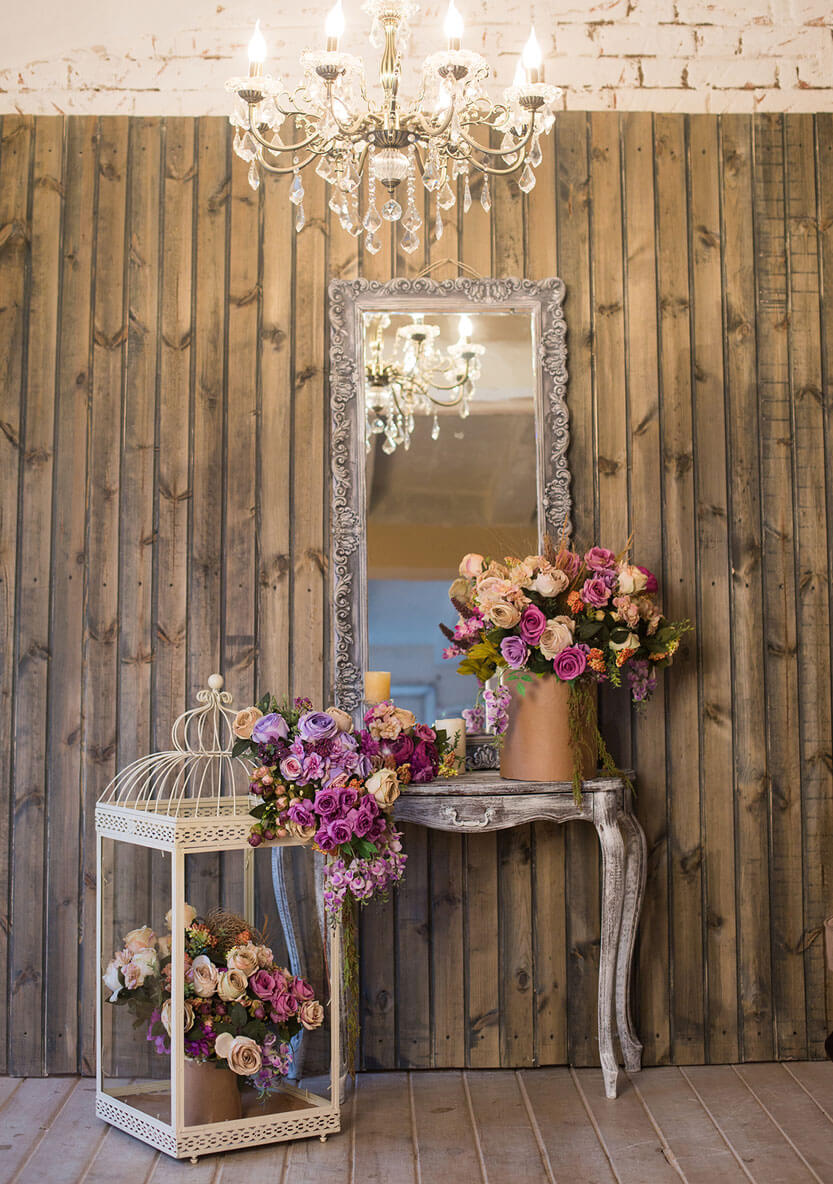Accent walls are great ways to break up the monotony of a large room, or call visual attention to a special design or architectural feature in the room. They don’t have to cost a lot of money or require substantial investment in materials or decor, either.
In fact you can probably create a stunning accent wall using items you already own or collect.
Based on your furniture layout and the room’s function, choose the wall you’d like to accent. You’ll only want to accent one wall, keeping the other three similarly painted and relatively simple, in order to create more contrast and excitement around it.
Accent Wall Ideas FOR EVERY SPACE
One simple, cheap way to create an accent wall is to paint it a bold color that complements the paint color of the other three walls, ceiling, and trim. Strong colors that might overpower a room if painted on every wall can be dramatic and exciting on a single accent wall.
Another paint-based approach is to create contrast between light and dark. In a room with three pale green walls, make the fourth a deep hunter green. Or if your walls are light yellow, paint your fourth accent wall a deep saffron.
Wallpaper in a complementary color scheme can create a lovely accent wall. If you’re not keen on the thought of papering, though, you can mimic the look with a tonal accent paint and simple, repeatable geometrically patterned stencil.

In a bedroom, make the wall behind your bed’s headboard the accent wall by combining strong paint choices with oversized, three-dimensional, or sculptural art above the headboard.
Or kill two birds with one stone, so to speak, by turning the headboard into the accent piece itself, perhaps by using unusual materials — old whitewashed fencing, oversized upholstered doors or table tops, or bookshelves can all make creative headboards.
In a small or odd-sized room, you can enlarge the space and make it feel less cave-like by displaying a collection of framed mirrors on the wall in an artful cluster. Mirrors reflect the light and create an illusion of enhanced space.
In the same vein, any collected artwork or decorative items can form the basis of a unique accent wall. Choose items that you love and that can be grouped according to a unifying theme or motif for the greatest dramatic impact.
Accent walls can also be made by installing a contrasting materials on top of the usual drywall. Brick, wooden pallets, and corkboard all add textural interest as well as visual allure, and won’t necessarily cost an arm and a leg to add.
Or consider adding a frontage of paving stones in a complementary neutral color that works well with the rest of the room’s color scheme. Stone can be sophisticated and modern, or earthy and “arts and crafts,” depending on the type and texture.
Don’t overlook fabric choices, either. A lovely textural print, for example, or a large swath of fabric with printed handwriting can add whimsy and tons of personality to the right room. Fabric can also be swapped out seasonally much more easily than other materials, making it a flexible choice.
If you’re working with a room with a built-in point of focus, such as a fireplace or uniquely sized or shaped windows, go with the flow and choose that wall as your accent wall. With built-in features like that, however, you’ll want to keep the approach simple, relying on contrasting paint or stencils to add the interest you’re looking for.

Something as simple as a full-wall bookshelf might be all you need for some rooms. Stack up books but don’t cram them into every available inch. Rather, leave room for another set of similarly-themed collectibles — small, favorite photographs in silver frames, for example.

Above all, keep in mind the room’s purpose and function. Consider how you’d like your family and guests to feel in the room. Think outside the box with some visual inspiration, and don’t be afraid to make a bold choice. It’s just one wall!



